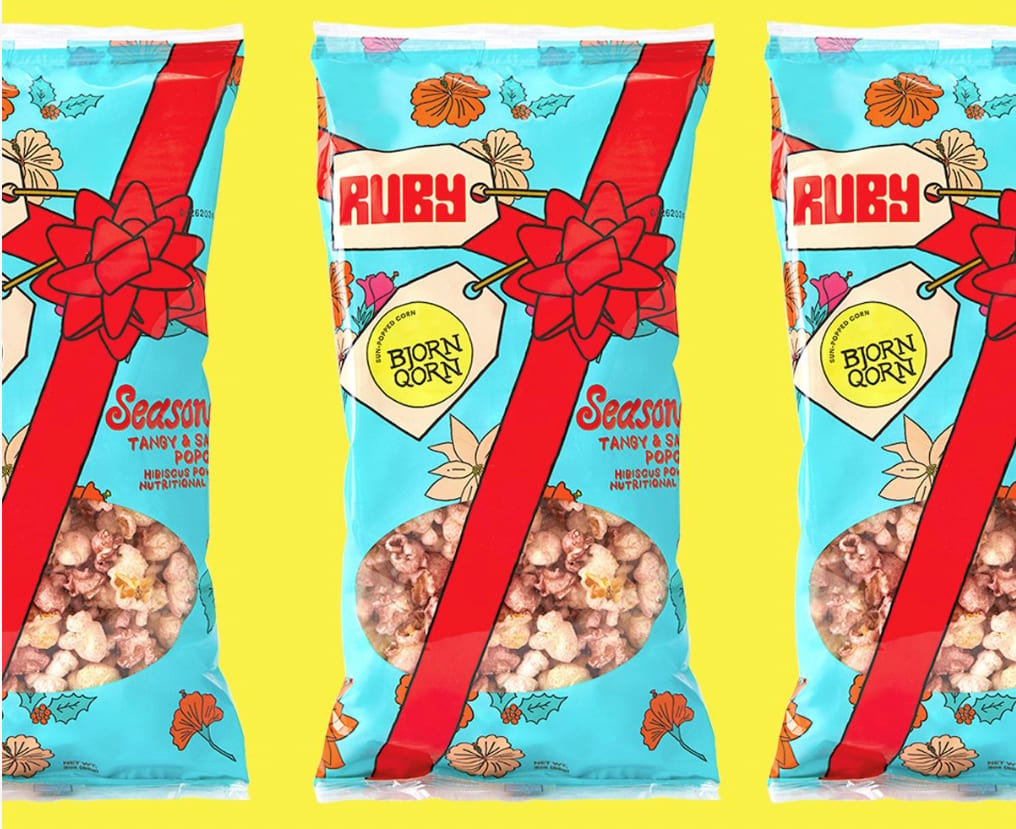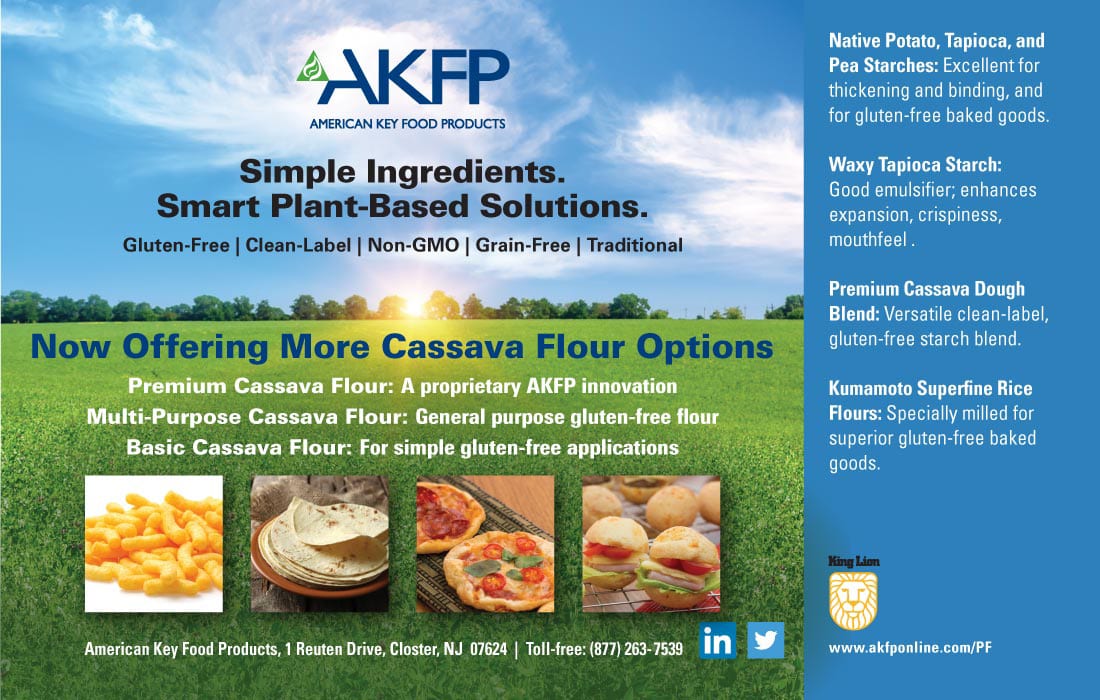Snacks
Trends
Consumer behaviors, processor innovation drive snacking, new products.
Miles of Aisles
Snack foods, like desserts, are a favorite for consumers and manufacturers alike. They are fun, a quick indulgence, compatible with on-the-go lifestyles, affordable, and tasty.
Snacks also are on-trend. Several of Innova Market Insights Top 10 Trends for 2024 support continued successes in the snack food industry. Our third 2024 trend, “Prioritizing Prevention,” demonstrates how consumers take action to prevent health concerns and select healthier snacks. The related seventh trend, “Indulging in Health,” reflects the mash-up of health and indulgence in categories such as snacks. Our fourth trend, “Plant-based: The Rise of Applied Offerings,” also speaks to the infiltration of plant-based formats into snacks. The trend, “Local Goes Global,” our fifth trend, acknowledges the simultaneous rise of foods such as snacks with ingredients and seasoning from particular regions and food cultures.
BY LU ANN WILLIAMS
Photo courtesy of: Getty Images / kali9

Meat Your Next Snack! US is a global meat snacks leader. The market keeps growing with on-trend tastes, sizes and clean label appeal. Photo courtesy of Chomps / We Are The Chompians LLC
Consumers seek healthy snacks
When we consider the better-for-you snacks market, we look for one or more product claims about reduced negative nutrients and ingredients; or better nutrition “positives.” Reduced negative claims focus on product nutrient and ingredient features associated with chronic disease—namely these include sugar, calories, carbohydrates, sodium, fat, and cholesterol. Conversely, better nutrition claims emphasize features associated with health maintenance and disease prevention—including various macronutrients, and micronutrients.
Our consumer survey results suggest that snacking is trending toward health. More than 60% of consumers globally report eating healthy snacks at least once daily. Highest percentages of consumers say that their consumption of indulgent snacks—that also have health and nutrient features—changed most during the past 12 months. Consumers also tell us that they are choosing smaller everyday treats.
When we asked consumers why they choose better-for-you snacks, their leading response was a “balanced diet.” They also want to improve their health, feel better physically, and manage their weight.
We ask consumers lots of questions about perceptions of a healthy snack. What makes a snack healthy? Consumers describe a healthy snack as one with enhanced positive features such as fiber, protein, and natural ingredients; and-or the absence of additives and preservatives; no artificial ingredients; and no/low/reduced claims for negative nutrients.
One-third of surveyed North American consumers said that a high-protein claim is particularly important when purchasing healthy snacks. Not surprisingly, Innova Market Insights found that snack launches with a high/source of protein claim grew at a compound annual rate of +26.2% during the three-year period ending June 2023. Notable percentages of consumers also report increasing consumption of snacks that are free from or feature reduced levels of ingredients such as sugar, salt, or calories.
One in five US consumers claim to have increased their consumption of indulgent snacks during the past 12 months. They are likely to consume indulgent snacks two to three times a day, but a small percentage report having indulgent snacks more than four times a day. By age group, indulgent snacking is most prevalent among Generation Z and Boomers.

Merry Poppins! Popcorn remains a growing, popular category with adventurous new offerings. New York-based, ingredient-forward brands Bjorn Qorn and Ruby partnered for a colorful holiday product with Ruby’s hibiscus flavor (powder), sun-popped popcorn, sunflower oil, nutritional yeast and salt. Photo courtesy of BQ Farms Inc / BjornQorn
Consumers also recognize the potential unhealthfulness of snacking. Nearly 30% say they limit snacking and more than 40% of those who decreased snack consumption during a prior 12-month period did so because they think snack foods are not healthy.
Nuts and Seeds
Nuts and seeds deliver a tasty combination of pleasure and health. They are the fourth ranked snack subcategory in North America and make up nearly one in five snack food launches in the region.
When it comes to these products, high protein and GMO-free are leading, growing claims. Other trending claims relate to fat, fiber, freedom from grains, keto- and paleo-friendly options, and gluten-free. Packagers often call out inherent nutrient features, for example, high levels of omega-3s in walnuts.
On the pleasure side, recent launches include gourmet and artisanal offerings, plus herb flavors. Top nut and seed product flavors include salt, sea salt, honey, and chili. Cayenne pepper and cocoa also are growing flavors in nuts and seeds.

Raise the Bar! New healthier offerings help bar category expand, appeal to moms and on-the-go kids. Photo courtesy of Once Upon a Farm, PBC
Sales A-Poppin!
North America is a top regional popcorn market, accounting for one-quarter of global popcorn launches and second only to the Asia Pacific region. Both sales value and compound annual growth rate have risen consistently during the past five years.
Popcorn is associated with fun and enjoyment. New launches here include flavors inspired from bakery and confectionery categories as well as holiday limited-edition flavors, and multi-flavor blends. Artisanal and handmade popcorn is gaining traction. Popcorn is not naturally high in protein so popcorn products with a protein claim contain added protein-rich ingredients such as whey protein, cheese, and peanut butter.
On the health side, consumers also can choose from products that are wholegrain, air-fried, gluten-free, GMO-free and clean label. Some also tout reductions of negative nutrients such as fat, trans fat, and cholesterol. Indulgence, however, has a strong presence. In recent months, Innova has tracked launches with upgraded toppings such as salted caramel coating and a dark chocolate drizzle.
Savory and salty snacks lead the positive nutrition trend
Savory and salty snacks make up three-quarters of snacks category sales value in North America. That translated to the largest market globally for savory/salty snacks sales by dollar sales value in 2022. North America accounts for nearly one-third of the global market for savory/salty snacks. Perhaps not surprisingly, savory snacks are more likely than sweet snacks to include claims regarding reduction of negative nutrients—namely fat, cholesterol, or sodium. They also are twice as likely than sweet snacks to cite fiber or protein claims.
Savory/salty snacks include potato-based snacks, the leading and fastest growing among a dozen snack subcategories. Other prominent and fast-growing claims include the increasingly popular “plant-based,” along with “vegan” and other “clean label” descriptors. Limited edition and seasonal claims can generate excitement among consumers by creating a sense of urgency to try a product during the short time that it’s available.

Are You Nuts? Some new nut, seed offerings tout flavor-forward appeal. Photo courtesy of Truly Good Foods
Flavors in potato-based snacks range from savory—including barbecue, cheddar cheese, sour cream and onion—to sweet (such as milk chocolate and honey). Other promoted features include sensory texture enhancements (such as thicker cuts) or preparation methods (such as oven-baked or kettle cooked). There also are a growing number of bio-based packaging and descriptions of company commitments toward environmental friendly projects.
We are seeing growth in bean-based snacks, especially at food and beverage innovation events such as Natural Products Expo West. Growth in this subcategory was a robust +39.4% in 2022 compared to 2021. Leading ingredients include chickpea, pea, and lentil. Because beans provide protein, launches often carry a protein claim.
For the record, Innova classifies trail mixes as savory/salty, even though they often contain sweet ingredients. In this area, candies (like Mars’ M&Ms), chocolate, popcorn, pretzels, potato chips, and dried fruits all serve to amp up the indulgence level of trail mixes.
Meat snacks also have a dedicated US following. It is no surprise that high or source of protein is the top claim, given the concentrated protein content of meat. Claims regarding the absence of sugar and gluten, along with the reduction in carbohydrates, can refer to the meat itself, which naturally does not contain either, or the seasonings used in products such as jerky and snack sausages.
Clean label claims—including GMO-free, no additives/preservatives, natural, organic—are consistent with claims we see on other meat-based products. Innovation ranges from limited editions featuring regional global flavors to twists on traditional salami and pepperoni. There also are new smoked and cured flavor options and even collagen-rich animal parts such as pig ears.

Earth-Friendly Eats: Potato-based snacks are a savory category leader. Humble touts organic product, chef-driven flavors and industrial compostable packaging. Photo courtesy of Humble Snacks Inc.
Sweet snacks reduce sugar
In contrast to savory and salty snacks that often add ingredients that boost health, sweet snacks tend to focus on sugar reduction to improve their health profile. In fact, the fastest-growing claims in better-for-you sweet snacks are low sugar and low carb. No added sugar and sugar-free claims have highest market penetration for sweet snacks with reduced negatives. However, we are seeing increases in claims for positive content of protein, fiber, vitamins, and minerals too. In fact, nearly one-third of better-for-you sweet snack launches display a high or source of fiber claim. It is interesting to note that consumers associate sweet snacks with treats for children, while they choose savory snacks for traveling and commuting.
In 2002, North America and West Europe were the top regions for snack bars and they accounted for 79% of retail sales combined. Snack bars are highly popular sweet snack in North America, especially among younger generations of adults and those with children. More than half of US consumers report having snack bars at breakfast. Of course, they also are popular as a morning or afternoon snack. Consumers tell us that they eat snack bars for convenience, taste, and health and that they are most influenced by claims regarding sugar, fiber, and protein, along with use of “real” ingredients.
Those who recently increased their consumption did so for health, change in lifestyle or needs, and more variety and novelty. Milk chocolate is the most popular flavor, followed by almond, mixed nuts and dark chocolate. Gluten-free, fiber, protein and vegan are the top claims among new snack bars products.
“We are seeing growth in bean-based snacks … Growth in this subcategory was a robust +39.4% in 2022 compared to 2021. Leading ingredients include chickpea, pea, and lentil. Because beans provide protein, launches often carry a protein claim.”
Functional ingredients accounted for more than one-third of snack bar launches and posted an increase in penetration. We expect additional use of functional ingredients such as prebiotics, probiotics or CBD/hemp in new snack bar products.
Areas for opportunity
Nutrient-rich, indulgent snacks appeal to consumers and we see room for expansion. Here are three reasons: one-third of those ages 18-24 choose products that positively boost their nutrition or how their body functions; more than half of those ages 25-44 are consuming snacks for nutritional benefits; and one-third of consumers have increased consumption of nutrient-rich indulgent snacks. Manufacturers can innovate around nutrient-rich indulgence with natural ingredients, functional benefits, emotional health benefits, and novelty and surprise.
Niche entries may target consumers with new forms, sizes and packages to accommodate shifting snacking occasions. Processors also may want to address emerging nutrient claims, such as noting omega-3, fluoride, calcium or iron. Also important are social responsibility features for those who want healthy snacks that also are consistent with broader personal values. PF
Lu Ann Williams is Global Insights Director at Innova Market Insights, provider of market research services including the Innova Database. With more than 25 years’ experience in the food industry, Lu Ann is a trend expert and frequent public speaker at events worldwide. She leads a team of analysts and works with global clients. Contact her at luann.williams@innovami.com



